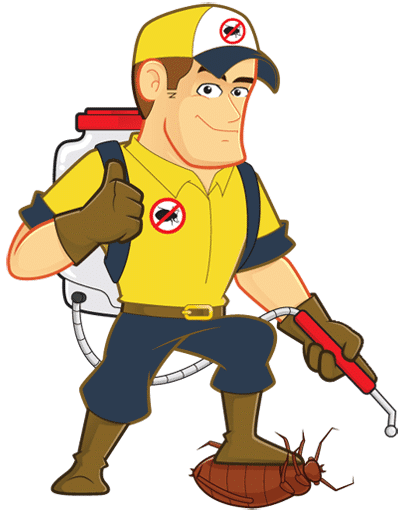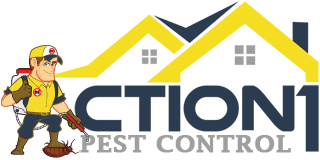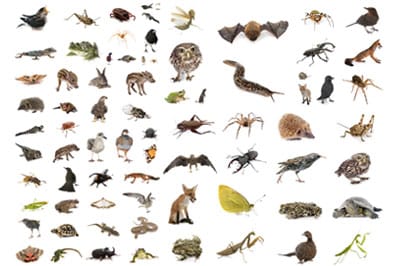Scorpion Control and Extermination
Call Us Today- Home
- »
- Pest Control
- »
- Scorpion Exterminator
Finding scorpions in your home can be alarming, but these arachnids are manageable with the right approach. Most scorpion species in the United States are not deadly, with only two southwestern species posing serious danger to humans. Even non-lethal scorpions can deliver painful stings that last for hours or days, making control essential for your comfort and safety.
Effective scorpion control requires understanding their behavior, identifying warning signs, and implementing targeted strategies. We’ll explore how to identify different scorpion species and assess the actual risks they pose to your household. Recognition of infestation signs helps determine when professional intervention becomes necessary.
The key to successful scorpion management lies in combining immediate removal techniques with long-term prevention methods. We’ll guide you through proven elimination strategies, from sealing entry points to using natural deterrents and professional treatments. Our comprehensive approach addresses both active infestations and future prevention to keep your property scorpion-free.
Highly Trusted Scorpion Extermination Company

High Quality Services

Affordable & Upfront Pricing

Emergency Same Day Service
Understanding Scorpions: Dangers, Signs and Extermination
Scorpions are predatory arachnids with unique biological characteristics that distinguish them from spiders and other arthropods. Different species exhibit varying behaviors and habitat preferences across the United States, with the bark scorpion being the most medically significant.
Identification and Biology
We can identify scorpions by their distinctive body structure consisting of a segmented tail ending in a venomous stinger and two prominent pincers called pedipalps. Unlike spiders, scorpions have eight legs and a segmented abdomen that extends into their characteristic curved tail.
Physical characteristics include:
- Body length ranging from 1-4 inches depending on species
- Hard exoskeleton providing protection from many pesticides
- Eight eyes arranged in specific patterns
- Specialized sensory organs called pectines on their underside
Scorpions are predatory arachnids that hunt insects, spiders, and other small arthropods. They possess the ability to slow their metabolism dramatically, allowing them to survive up to a year without food.
These creatures glow under ultraviolet light due to fluorescent compounds in their exoskeleton. This characteristic proves invaluable for detection during nighttime inspections.
Types in the US
We encounter approximately 90 scorpion species across the United States, with most concentrated in southwestern states. The bark scorpion (Centruroides sculpturatus) poses the greatest medical concern due to its potentially dangerous venom.
| Species | Size | Habitat | Medical Significance |
|---|---|---|---|
| Bark Scorpion | 2-3 inches | Vertical surfaces, trees | High – venomous |
| Desert Hairy Scorpion | 3-5 inches | Ground burrows | Low – mild sting |
| Striped Tail Scorpion | 2-3 inches | Rocky areas | Low – mild sting |
Bark scorpions differ from other species through their slender build and ability to climb smooth vertical surfaces. They squeeze through openings as small as 1/16 of an inch.
Desert hairy scorpions represent the largest species in North America. Despite their intimidating size, their sting typically causes only localized pain similar to a bee sting.
Habitats and Behavior
We observe that scorpions are nocturnal creatures that remain hidden during daylight hours and become active when temperatures exceed 75°F. They seek areas providing moisture, food sources, and protective shelter.
Common hiding places include:
- Wall voids and suspended ceilings
- Under rocks and landscape materials
- Firewood piles and lumber stacks
- Irrigation systems and water sources
Scorpions exhibit remarkable adaptability to urban environments. They utilize modern building materials and artificial lighting to hunt prey insects that gather near light sources.
During winter months, some species demonstrate communal denning behavior. Multiple scorpions may share the same shelter, making colony treatment more effective than targeting individuals.
These predatory arachnids can survive extreme conditions by entering a state of reduced activity. They regulate their body temperature by moving between different microhabitats throughout the night.
Our 5 Step Pest and Scorpion Control Process

Scorpion Dangers and Risks
Most scorpion stings cause localized pain similar to bee stings, but certain species present serious health risks. The bark scorpion poses the greatest danger in North America, while children and elderly individuals face higher risks from any scorpion encounter.
Stings and Symptoms
When we encounter a scorpion sting, the most common symptom is immediate burning pain at the sting site. This pain typically feels similar to a bee sting and remains localized to the affected area.
Common symptoms include:
- Intense burning sensation
- Localized swelling
- Numbness around the sting site
- Minor redness
Most scorpion stings from common species resolve within 30 minutes without medical intervention. However, bark scorpion stings produce significantly more severe reactions.
Severe bark scorpion symptoms:
- Severe pain and extensive swelling
- Numbness spreading beyond the sting site
- Frothing at the mouth
- Difficulty breathing
- Muscle twitching and convulsions
- Respiratory paralysis
We recommend applying ice packs and pressure compression to any sting site. Seek immediate medical attention if severe symptoms develop or if the victim is a child or elderly person.
Venomous Species to Watch For
All scorpions are venomous, but only one North American species poses serious danger to humans. We identify the bark scorpion (Centruroides exilicauda) as the primary threat.
Bark scorpion identification:
- Length: 3 inches
- Thin tail: Only 1/16 inch wide
- Yellow body without stripes or patterns
- Narrow pincers (chelae)
- Small bump below the stinger
The bark scorpion inhabits Arizona, extreme southeastern California, and southwestern New Mexico. Unlike other species, bark scorpions climb walls and commonly enter homes.
Less dangerous species:
- Arizona hairy scorpion (5-7 inches, largest North American species)
- Stripedtail scorpion (2.5 inches, striped body)
- Various Vaejovis species
These common species deliver stings comparable to ant or wasp stings. We consider them beneficial predators that control pest insect populations.
Risks to Pets and Children
Children and elderly individuals face the highest risk from scorpion stings due to their smaller body size and developing or compromised immune systems. We observe more severe reactions in these vulnerable populations.
High-risk factors:
- Children: Smaller body weight means higher venom concentration
- Elderly: Weakened immune response and potential breathing difficulties
- Pets: Small dogs and cats face similar risks as children
Bark scorpion stings can cause life-threatening symptoms in children, including respiratory paralysis and convulsions. We recommend immediate emergency medical care for any child stung by a suspected bark scorpion.
Pet symptoms to monitor:
- Excessive drooling or pawing at mouth
- Difficulty walking or unusual movements
- Labored breathing
- Vomiting
Most healthy adults recover from non-bark scorpion stings without treatment. However, we advise capturing the scorpion safely for identification when possible, especially in areas where bark scorpions occur.
Signs of a Scorpion Infestation
Recognizing scorpion infestations requires knowing where these pests enter homes and understanding what indicates active populations. We can identify problems early by examining access points and watching for specific activity markers.
Common Entry Points in Homes
Scorpions enter through surprisingly small openings. They can squeeze through gaps as thin as a credit card, making almost any crack a potential entry point.
Door and window areas present the most common access routes. Gaps under exterior doors allow scorpions to walk directly inside. Poorly sealed window frames and worn weatherstripping create additional openings.
Foundation vulnerabilities include cracks in concrete, gaps around utility penetrations, and spaces where pipes enter walls. These areas often go unnoticed but provide direct access to interior spaces.
Utility connections such as dryer vents, electrical conduits, and plumbing entries frequently lack proper sealing. Scorpions follow these pathways from exterior walls into living areas.
We should inspect these locations regularly:
- Base of exterior doors
- Window frame perimeters
- Foundation cracks and joints
- Pipe and cable entry points
- Vent openings and screens
Indicators of High Scorpion Activity
Physical evidence provides the clearest signs of scorpion infestation. Finding ten or more scorpions around your property within a short timeframe indicates an established population.
Scorpion droppings appear as white, sandy powder in areas where they shelter. Shed skins look like tiny dead scorpions and accumulate as they molt five to six times during their lifecycle.
UV flashlight detection offers the most effective identification method. Scorpions fluoresce under black light, glowing brightly in dark environments. We recommend checking after sunset in:
- Wood piles and storage areas
- Garage corners and crawl spaces
- Basement and attic spaces
- Around outdoor structures
Increased insect activity often precedes scorpion infestations. Large populations of crickets, cockroaches, or beetles attract scorpions seeking food sources.
Environmental factors like nearby citrus trees, recent construction, or abundant dark hiding spots increase infestation likelihood. These conditions create ideal scorpion habitat close to living areas.
Scorpion Control Strategies
Effective scorpion control combines natural deterrents with professional intervention methods. Natural solutions like essential oils and diatomaceous earth offer chemical-free prevention, while professional pest control services provide specialized treatments for severe infestations.
Sealing and Exclusion Methods
Inspect and seal cracks around windows, doors, and foundation walls using caulk or weatherstripping. Pay special attention to areas where utility lines enter the building.
Screen vents and chimneys with fine mesh to block scorpion access. The mesh should have openings smaller than 1/4 inch to prevent entry.
Check for gaps under sliding doors and garage doors. Install door seals or adjust the doors to eliminate these common entry points.
Repair damaged window screens immediately. Even small tears can allow scorpions to enter our living spaces.
Addressing Food Sources Indoors
Implement comprehensive pest control to eliminate crickets, cockroaches, ants, and centipedes that scorpions hunt. Without prey, scorpions will seek food elsewhere.
Vacuum regularly to remove insects and their eggs from carpets and crevices. This reduces the overall insect population that attracts scorpions.
Fix moisture problems that attract prey insects. Repair leaky pipes and improve ventilation in humid areas like bathrooms and basements.
Store food in sealed containers to prevent attracting insects. Pet food should be kept in airtight bins rather than open bags.
Use targeted insecticides for specific prey insects when necessary. Focus treatments on areas where we observe cricket or cockroach activity.
Natural Repellents and DIY Solutions
We can implement several natural methods to deter scorpions without harsh chemicals. Essential oils create effective barriers against these pests.
Peppermint and lavender oils work particularly well when mixed with water and sprayed around entry points. Scorpions dislike these strong scents and typically avoid treated areas.
Diatomaceous earth provides another natural solution. We apply food-grade diatomaceous earth around potential hiding spots and entry points. This powder damages scorpion exoskeletons through desiccation.
Plant-based deterrents offer long-term protection. Planting lavender, lemongrass, and garlic around our property creates natural barriers. These plants repel scorpions while enhancing landscape aesthetics.
Traps help monitor and reduce populations. We place scorpion-specific traps near areas where we’ve spotted signs of activity. Regular trap inspection allows us to gauge infestation levels and capture individual scorpions safely.
Professional Scorpion Removal Options
Our professional scorpion control services offer specialized solutions when natural methods prove insufficient. Our experts use advanced techniques tailored to specific scorpion species and infestation severity.
Manual removal involves trained technicians using specialized tools to safely capture and relocate scorpions. This method works effectively for isolated incidents or sensitive environments where chemicals aren’t suitable.
Targeted pesticide applications provide comprehensive treatment for larger infestations. Professionals apply EPA-approved chemicals specifically designed for scorpion control in strategic locations around our property.
Integrated pest management combines multiple approaches for maximum effectiveness. Professional services typically include:
- Initial property assessment
- Treatment plan development
- Regular monitoring visits
- Preventive maintenance programs
Ongoing service contracts ensure continued protection through scheduled inspections and treatments. We offer quarterly or monthly visits to maintain scorpion-free environments and address new activity promptly. Talk to one of the Action 1 Pest Control specialists to learn more about our monthly pest control plans.

Why Hire Our Team
Our professional scorpion extermination requires specialized knowledge, proven treatment methods, and comprehensive safety protocols that deliver lasting results. Our team combines advanced detection techniques with targeted pest control solutions to eliminate scorpion infestations while protecting families and businesses from future invasions.
Our licensed technicians receive advanced training in scorpion biology and behavior patterns specific to regional species. This specialized knowledge enables accurate identification of harborage areas that untrained individuals typically miss.
We utilize UV detection equipment during nighttime inspections. Scorpions fluoresce under ultraviolet light, making them dramatically more visible in dark conditions where they normally remain hidden.
Key areas of expertise include:
- Species identification and behavior analysis
- Specialized detection methods and equipment
- Knowledge of seasonal activity patterns
- Understanding of habitat preferences and entry points
The team’s experience with different scorpion species allows for customized treatment approaches. Arizona Bark Scorpions require different strategies than Striped Bark Scorpions due to their varying behaviors and resistance levels.
Continuous education keeps technicians current with evolving pest control methods. Industry certifications ensure adherence to professional standards and safety protocols throughout the scorpion control process.
Commercial-grade treatments specifically formulated for scorpion extermination deliver superior results compared to over-the-counter products. These specialized formulations penetrate scorpions’ resistant exoskeletons effectively.
Targeted application techniques focus treatments on identified harborage areas and activity zones. This precision approach maximizes effectiveness while minimizing chemical usage throughout the property.
Treatment methods include:
- Residual barrier applications around foundations
- Crack and crevice treatments in hiding spots
- Exclusion work to seal entry points
- Habitat modification recommendations





